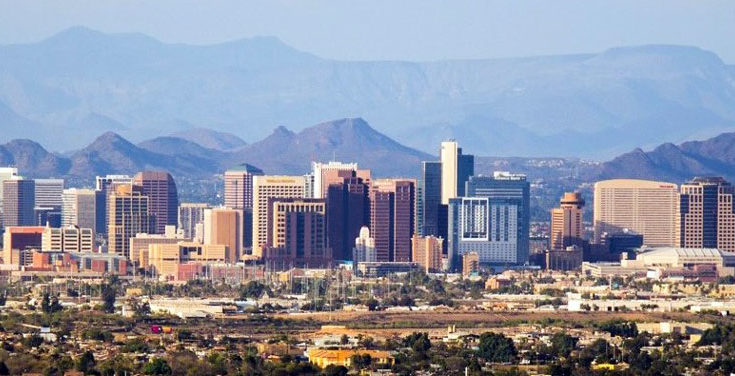Contributed Article/Courtesy U.S. Census Bureau
The South and West continue to have the fastest-growing cities in the United States, according to new population estimates for cities and towns released by the U.S. Census Bureau. Among the 15 cities or towns with the largest numeric gains between 2017 and 2018, eight were in the South, six were in the West, and one was in the Midwest.
Phoenix, Ariz., was at the top of the list with an increase of 25,288 people. Rounding out the top five with the largest population increases were San Antonio, Texas (20,824); Fort Worth, Texas (19,552); Seattle, Wash. (15,354); and Charlotte, North Carolina (13,151).
Buckeye, Ariz. had the largest percentage increase with 8.5 percent to bring its total population in 2018 to 74,370.
Cities in the South that experienced a surge in population growth were Austin, Texas (12,504); Jacksonville, Fla. (12,153); Frisco, Texas (10,884); McKinney, Texas (9,888); and Miami, Florida. (8,884). Cities in the West were San Diego, Calif. (11,549); Denver, Colo. (11,053); Henderson, Nev. (10,759); and Las Vegas, Nev. (9,016). Columbus, Ohio (10,770), was the only city from the Midwest on the top 15 list.
Ten incorporated places exceeded the 50,000 population mark in 2018 — seven in the South, two in the West, and one in the Midwest. These cities and towns were Madison, Ala. (50,440); Maricopa, Ariz. (50,024); Bentonville, Ark. (51,111); Newark, Ohio (50,029); Stillwater, Okla. (50,391); Smyrna, Tenn. (50,775); Leander, Texas (56,111); Little Elm, Texas (50,314); Wylie, Texas (51,585); and Lacey, Wash. (50,718).
Additionally, three cities crossed the 100,000 population mark in 2018. They were Vacaville, Calif. (100,154); San Angelo, Texas (100,215); and Kenosha, Wis. (100,164).
Big City and Small Town America
The United States is a nation of both big cities and small towns. While only 4.0% (775) of all cities had a population of 50,000 or more in 2018, collectively they contained 127.1 million people — nearly 39 percent of the U.S. population. On the other hand, of the 19,495 incorporated places in the United States, around 76% (14,768) had fewer than 5,000 people.
Housing Unit Growth Remained Steady in Nearly All States
The nation’s housing stock grew by 1.2 million units between 2017 and 2018, reaching 138.5 million housing units in total. The growth rate of 0.8% from 2017 to 2018 remained the same as from the previous year.
Four states gained more than 50,000 housing units between 2017 and 2018: Texas (172,000), Florida (108,000), California (104,000) and North Carolina (63,000).
Utah was the fastest-growing state in terms of housing units, with an increase of 2.2% between 2017 and 2018. Idaho had an increase of 1.9%, and Colorado and Texas had an increase of 1.6% each.
Housing Unit Growth Since Census Day (April 1, 2010)
The nation’s housing stock increased by 6.8 million units (5.2%) since April 1, 2010. North Dakota was the fastest-growing state in terms of housing units, with an increase of 18.9% during the same period. Rounding out the top five states in percentage gain were Utah (13.2%), Texas (11.3%), Idaho (10.2%) and Colorado (9.5%).
Twelve states added more than 150,000 housing units between April 1, 2010, and July 1, 2018. In terms of the largest numeric increase, the top six were Texas (1.1 million), California (597,000), Florida (558,000), North Carolina (357,000), Washington (262,000) and New York (256,000).










